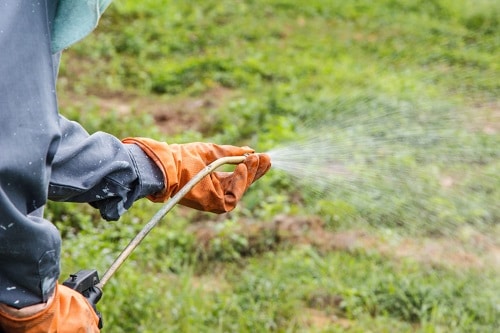Due to their big mosquito-like appearance, people often get confused that do crane flies bite or not? Read on to clear your doubts!
What Is a Crane Fly?

Crane-fly, a universal name for all the members of the ‘Tipulidae’ family, having six long, skinny legs. They are famous by the names, mosquito hawks, or daddy long legs. Ranging in size, from tiny to 1.2 inches long, crane flies are yellow, red, and black. Their wings are transparent, brown, brownish-yellow, or grayish-black. Crane flies exist since the Early Cretaceous period. There are more than 15,000 known species of crane flies.
Do Crane Flies Bite?
Crane flies don’t bite, and they are harmless to human beings. Even daddy long legs are one of the gentlest insects roaming on earth, but for some, they are a real nuisance. The larvae (a.k.a, Leatherjackets) of European crane fly (Tipula paludosa) are recognized pests, which cause damage to turf, pasture grasses, fruit, vegetables, and field crops in America. However, some of their species are important for recycling and decomposition.
Crane Flies Prevention
After crane flies’ elimination, prevention is truly the most crucial step to prevent them from coming back and laying eggs soon.
- Remove all the clutters of leaves and wood around your house.
- Keep your yard or lawn well-drained, as moist areas are the perfect breeding ground for crane flies.
- As thatch is an excellent place for crane flies larvae to grow, that’s why dethatch your lawn when necessary.
- Install window and door screens to inhibit their entrance into the house.
- Don’t overwater the plants and grasses.
How to Get Rid of Crane Flies?
As you now know, crane flies larvae are harmful to your lawn’s vegetation. That’s why it becomes necessary to eliminate them. Below are the two potent ways that will help you out.
1. Apply Insecticide

First, pick a pyrethroid or an imidacloprid based product for better results. These insecticides are available in both liquid and granule form. Now, make the right concoction, according to the label of the particular product. Spread the prepared mixture on the lawn using a garden sprayer or spreader in late summer or early fall because crane fly eggs hatch at this time. After that, cover your yard with 1/2 inch of water. Leave it for 25-30 minutes. This method kills the crane flies and larvae as well.
2. Use Nematode Solution

Steinernema carpocapsae is one of the nematodes that can kill crane flies larvae (Leatherjackets). This nematode is a natural predator. It’s available in spray and mixes. First, refer to the product label to make the right solution. Then, fill it into the garden sprayer. Before using this mixture, water your lawn and leave it for almost 20 minutes. After that, spray the solution evenly all over the desired area during the fall season at dawn or dusk. If your lawn becomes dry, then wet it with 1/2 inch of water.
Notes:
- Make sure to wear a good quality face mask and gloves while using the above methods to avoid any mishap.
- Repeat the above pest control techniques if they fail to work the first time.
- Always follow the label and instruction of the products for safe and effective use.
- Do not let your pets and family members get outside until the pest control is complete, as it can be harmful to them.
- Avoid direct contact with the insecticides or nematodes. If it happens, then wash the area with lots of water.
- Contact professional pest control experts, if the infestation is severe.
We hope after reading the above article, you’ll understand everything about the crane flies. Try the above methods to get rid of them and their larvae from your lawn for good. Besides, if fruit flies infest your house, then this article is for you.
